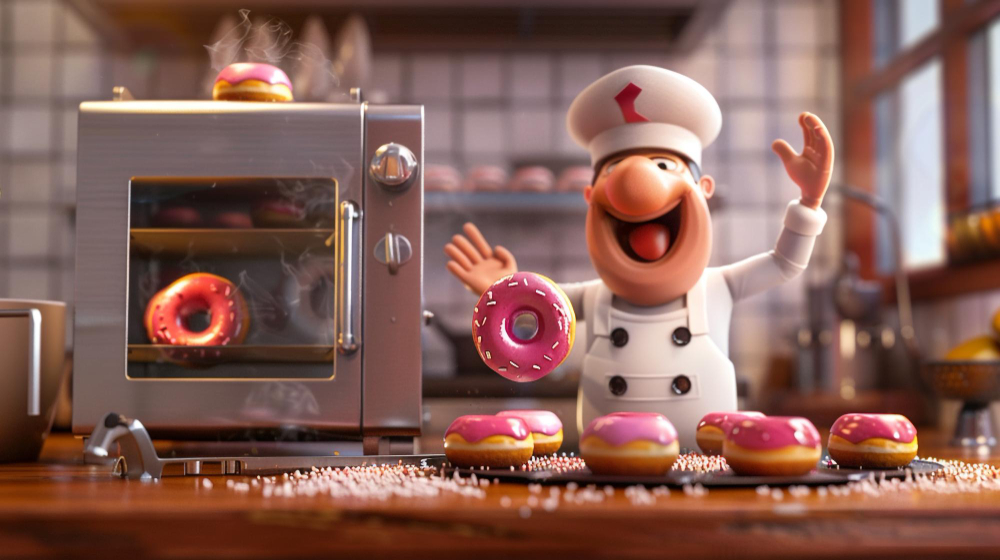Attempting to make candy may feel like embarking on a sweet and sticky adventure. Ah, candy making, where sugar gets to show off its versatility, transforming from a gentle syrup to a bold caramel with the flick of a thermometer. Wondering if you’ve cooked your candy to the right temperature? A candy thermometer is your new best friend.
You’re not alone if the word “thread stage” sounds like a knitting lesson gone wrong. But understanding these sugar phases is key. Typically, you’ll find yourself juggling between terms like “soft ball stage” and “hard crack stage,” each pointing to a specific temperature that your candy dreams rely on. Imagine the satisfaction of seeing sugar behave and transform based on just its temperature!
Of course, life doesn’t always offer thermometers, so you may have to rely on the old-school method of dropping the sugar syrup into cold water. The result? A misshaped blob or a perfect ball, each telling you how far your sugar has come along the candy-cooking journey. In this delightful cooking quest, your keen eye and a touch of luck will guide you to the sweetest success.
The Sweet Science of Temperature
Ready to get your candy-making game to the next level? Let’s talk temperature! It’s all about hitting the right spot where sugar concentration and heat shake hands to make magic.
First up, get yourself a candy thermometer. It’s your trusty sidekick in this sugary adventure. The thermometer is like a GPS for your sugar syrup, guiding you to the sweet destination: perfection!
If you’re more of a hands-on scientist, try the cold water test. Drop a spoonful of syrup into cold water. Watch and feel to see if it forms a specific shape, like a firm ball or even a hard ball. These stages are your sugary landmarks.
| Stage | Temperature | Sugar Concentration |
|---|---|---|
| Firm-ball | 244-248 °F | ~87% |
| Hard-ball | 250-266 °F | ~92% |
Avoiding crystallization is crucial. Stirring is great for workout, but not for sugar syrup! Be gentle, or you’ll end up with crunchy sugar crystals instead of silky smooth candy.
Caramelization is where sugar changes and becomes golden brown and delicious. It’s around 320°F, but who’s counting? Oh right, you should! Burning it isn’t the goal, unless “burnt sugar rock” is your new candy line.
Remember, temperatures and sugar stages can depend on factors like altitude! Just remember to adjust your expectations (and degrees) if you’re celebrating sweet success in the mountains.
From Sticky to Set: Taking the Candy’s Temperature
To make perfect candy, you’ll need a little know-how and some trusty tools. Understanding the candy stages and how to troubleshoot common issues can turn your gooey mess into sugary perfection.
Tools of the Trade
You gotta start with the right equipment—a candy thermometer is key. If you don’t have one, no worries; a bowl of cold water can be your trusty sidekick. Dropping sugar syrup into cold water lets you test its stage.
Thermometers vs. Water Test Table:
| Tool | How to Use |
|---|---|
| Candy Thermometer | Clip to the pot; watch the mercury rise. |
| Cold Water Test | Drop syrup, form it, then squint and guess. |
If you’re into marshmallows and toffee, get a heavy-bottomed pan. It helps distribute heat evenly so you won’t end up with burnt blobs.
Stage Whisperer: Knowing Your Candy Stages
Candy making is like magic—you start with goo and end with gold! Yet, finding that perfect texture involves knowing when to stop. Here’s a quick look at the candy stages that’ll guide you from divinity to rock candy:
Soft Ball Stage (235°F – 240°F): No, we’re not talking about sports. This is where your fudge and pralines come together.
Hard Crack Stage (295°F – 310°F): For when you want to shatter your candy dreams—literally! Think nougat and rock candy.
Sometimes corn syrup can help stabilize your sugar, keeping those pesky sugar crystals at bay.
Troubleshoot Your Sweets
Oops! Did your candy turn into a rock too soon or maybe not at all? Candy making can be fickle. If your caramels taste suspiciously like bitterness, check the heat and cooking time.
Trying making pralines? Stirred in some baking soda? That frothy texture needs practice. Don’t let steam interfere; it messes with the sugar’s ability to caramelize properly.
Keep these tips in your kitchen and you’ll avoid candy mishaps, turning out perfect sweet treats every time!
